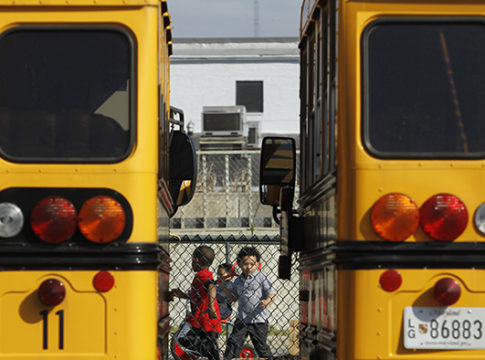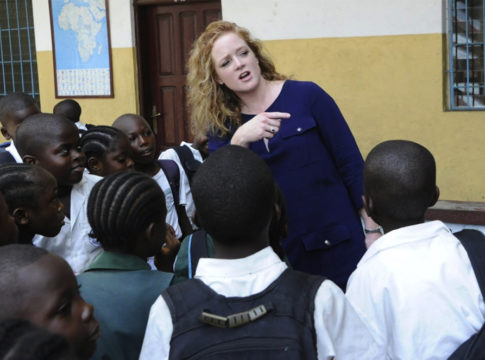Earlier this week, Stephanie Saul of the New York Times launched a full frontal assault on scholarship tax credit (STC) programs, accusing them of failing to help low-income students, draining public schools of needed funding, and of using public money for private purposes. However, these accusations are based on isolated anecdotes and flawed logic that do not reflect reality. Available data show that low-income families are the primary beneficiaries of STC programs and that STC programs have a positive fiscal impact on state treasuries. Additionally, the U.S. Supreme Court and every state supreme court to address the question have rejected the notion that STC programs entail the use of “public money”.
STC Programs Benefit Low-Income Children
Saul’s central accusation is that STC programs fail to meet the objective of benefitting low-income students. She writes: “scholarship programs have been twisted to benefit private schools at the expense of the neediest children.”
Her evidence to support this claim is weak.
Saul relies on anecdotal evidence from the only state whose STC program lacks means-testing (Georgia) to give the impression that STC programs do not truly benefit the needy. However, she fails to provide any statistical evidence to support this claim.
In fact, the available data show that scholarship organizations primarily fund families who earn well below the state-mandated income caps. For example, the average household income of scholarship recipients in Florida is $24,250, only 12.3 percent above the federal poverty line (FPL), though Florida’s STC program has an income cap of 185 percent of FPL. Likewise, the majority of families receiving STC scholarships in Pennsylvania have family incomes below $29,000, though the state allows a family of four to earn up to $84,000.
The low-income recipients of these scholarships benefit academically. A 2011 literature review by the Friedman Foundation for Education Choice reported that nine of ten randomized trials found positive effects on the academic performance of school choice program participants, as measured by standardized tests. Six studies found positive effects for all students while three found positive effects for only some students (particularly African-American students). Only one study found no impact. None of the studies found a negative impact.
The evidence demonstrates conclusively that STC programs fund low-income students, and that these students improve their academic performance.
STC Programs Do Not Harm Public Schools
STC programs clearly benefit the participants, but what is their impact on those students left behind in the public schools? Saul implies that STC programs drain public schools of needed funding at “a time of deep cutbacks in public schools,” noting that: “This school year alone, the [STC] programs redirected nearly $350 million that would have gone into public budgets to pay for private school scholarships for 129,000 students.”
Yet again, Saul fails to consult the data. She focuses on the reduction in tax revenue without examining the corresponding reduction in state spending. In fact, financial analyses of the STC programs in Arizona, Florida and Pennsylvania have found that the latter outweighs the former.
An independent study of the fiscal impact of Arizona’s STC program in 2009 determined that the state saves between $99.8 million and $241.5 million as a result of its scholarship tax credit program. In 2010, the Florida legislature’s nonpartisan Office of Program Policy Analysis and Government Accountability estimated that Sunshine State taxpayers saved $32.6 million, which is approximately $1.44 in state education funding for every dollar lost in corporate income tax revenue due to credits for scholarship contributions. In the same year, the Commonwealth Foundation reported that Pennsylvania saves $512 million a year as a result of its STC program, while reducing state tax revenues by about $40 million. These tremendous savings accrue because the average scholarship size is only $1,044, far below the average $14,300 cost per-pupil in Pennsylvania public schools.
The available evidence also shows that STC programs may have a positive impact on public school performance. A 2011 study by David Figlio and Cassandra Hart of found that Florida’s STC program had a small but statistically significant impact on public school performance on standardized math and reading tests. The study showed that public schools facing greater competition from private options saw greater gains than public schools with less competition.
Public vs. Private Money
As noted above, Saul believes that STC programs use public funds for private purposes. (Indeed, the title of Saul’s article was “Public Money Finds Back Door to Private Schools.”) However, this idea rests on a definition of “public money” that the legal system has found unrecognizable.
The U.S. Supreme Court and every state supreme court to address the question have unanimously rejected the contention that STC programs use public money. Saul fails to mention this inconvenient fact, writing only that: “For school choice advocates, the genius of the program was that the money would never go into public accounts, making it less susceptible to court challenges.”
Saul renders a perfect record in the courts as being “less susceptible to court challenges” and admits that the money never enters “public accounts” without drawing the conclusion, as the courts have, that the money in question is not “public”.
In the majority opinion of Arizona Christian School Tuition Organization v. Winn (2011), Justice Kennedy wrote that the plaintiffs’ (i.e. – Saul’s) argument improperly “assumes that income should be treated as if it were government property even if it has not come into the tax collector’s hands.” The Court rejected that premise since it “finds no basis in standing jurisprudence. Private bank accounts cannot be equated with the Arizona State Treasury.”
The U.S. Supreme Court’s decision was in keeping with Arizona’s state supreme court earlier decision, Kotterman v. Killian (1999), which stated:
According to Black’s Law Dictionary, “public money” is “[r]evenue received from federal, state, and local governments from taxes, fees, fines, etc.” Black’s Law Dictionary 1005 (6th ed.1990). As respondents note, however, no money ever enters the state’s control as a result of this tax credit. Nothing is deposited in the state treasury or other accounts under the management or possession of governmental agencies or public officials. Thus, under any common understanding of the words, we are not here dealing with “public money.
Saul finds this to be merely a “fiendishly clever” method of skirting any constitutional issues. In her view, since the funds were “otherwise due to the … treasury,” they should be considered public funds regardless of whether they have “come into the tax collector’s hands.” The courts, in her view, are making a legal distinction without a practical difference. But Saul’s logic does not withstand scrutiny.
If any money kept or donated due to a reduction in taxes is rendered “public money”, then every church and non-profit organization is partially funded with “public money” because of the tax deduction for charitable donations. This proposition would clearly violate the First Amendment’s Establishment Clause, which forbids the public financing of churches. Indeed, since the government has the power to raise tax rates as high as it pleases, ultimately all money is “public money”. Understanding the absurd implications of Saul’s position, the courts have wisely rejected it.
Conclusion
In most states, access to educational opportunities is primarily determined by zip code and accident of birth. Wealthier families can afford to live in districts with high-performing public schools or to send their children to private alternatives. By contrast, most low-income families can only afford to live in districts with underperforming schools. Moreover, even the highest-performing schools cannot meet the needs of every single child. School choice programs seek to address this inequity by providing low-income students with access to educational options that best meet their individual needs, giving them the best chance to succeed in life.
When designed and implemented properly, a scholarship tax credit program is a constitutional, popular, and fiscally sound method to increase educational options for low-income families. If for nothing else, Saul should be credited for bringing greater attention to this overlooked school choice option.
– Jason Bedrick
Jason Bedrick is a recent graduate of the Harvard Kennedy School and Research Fellow at the Josiah Bartlett Center for Public Policy in New Hampshire.





